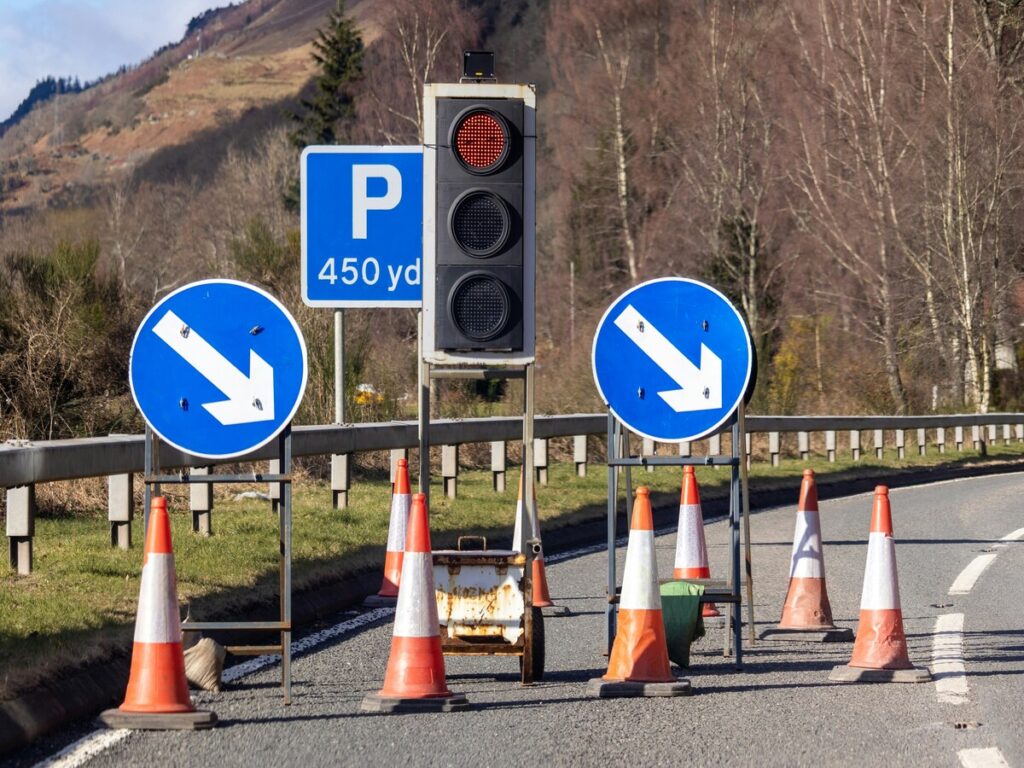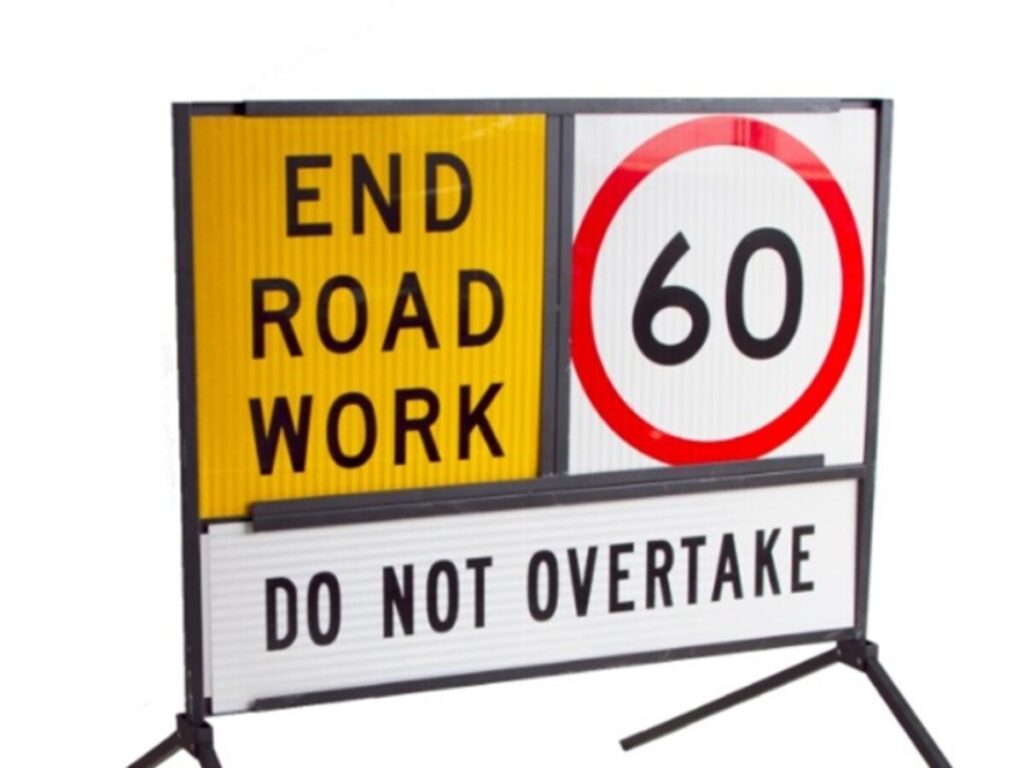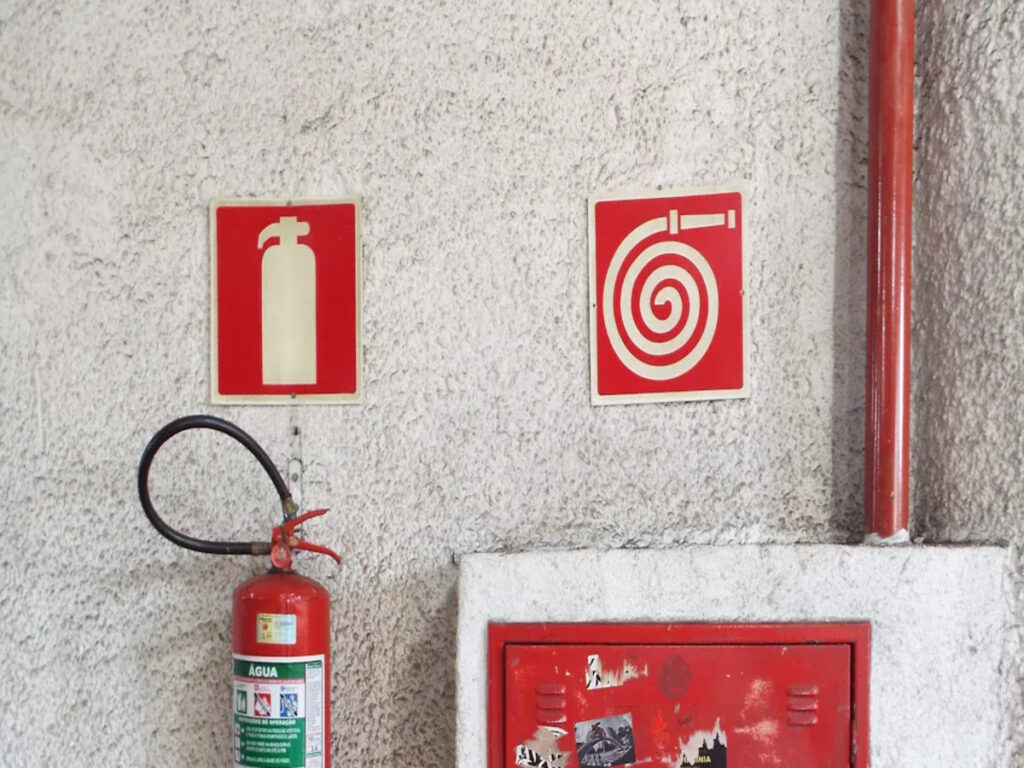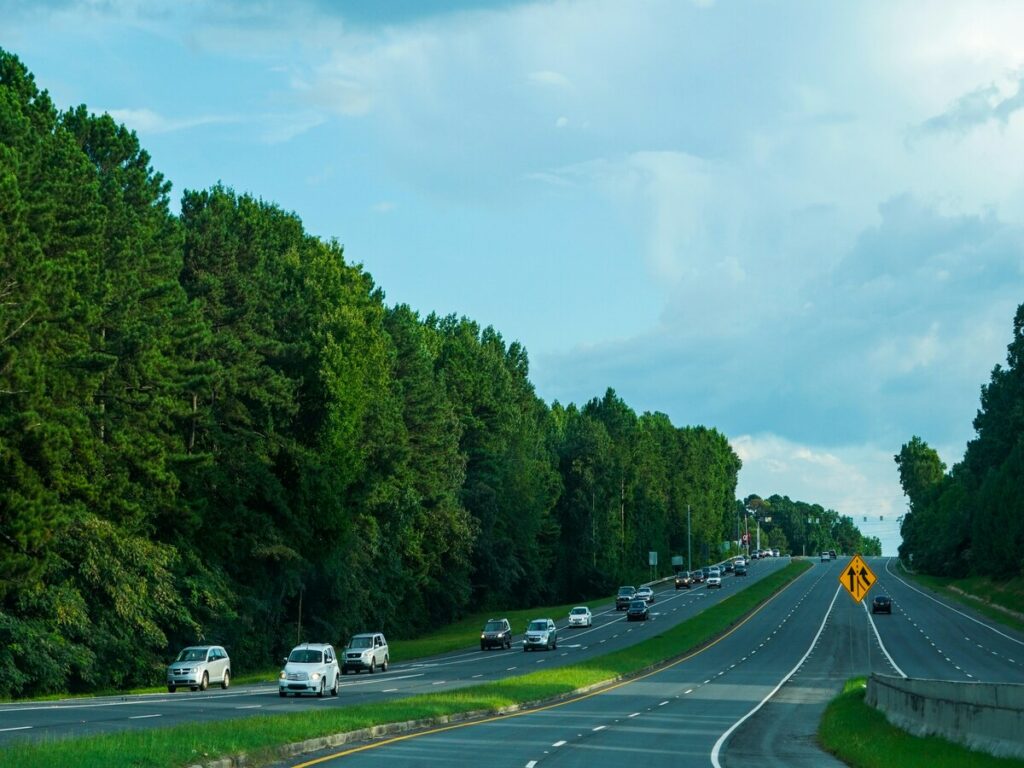
शहरों को लोगों को सुरक्षित रखने में मदद करने के लिए शहरों में रोड बोल्ड जोड़ते रहते हैं. ये बाधाएं यातायात को नियंत्रित करती हैं और इमारतों की रक्षा करती हैं. वे सभी के लिए चलने वाले क्षेत्रों को सुरक्षित बनाते हैं.
| क्षेत्र | सीएजीआर (2024-2032) | प्रमुख ड्राइवर और नोट्स |
|---|---|---|
| उत्तरी अमेरिका | 5.6% | सुरक्षा और बुनियादी ढांचे पर ध्यान दें; शहरी में मजबूत मांग, सरकार, और वाणिज्यिक सेटिंग्स. |
| यूरोप | 4.9% | सुरक्षा नियमों और स्थिरता द्वारा संचालित; जर्मनी में स्मार्ट सिटी प्रोजेक्ट्स, यूके, फ्रांस. |
| एशिया पैसिफिक | 6.4% | सबसे तेजी से वृद्धि; तेजी से शहरीकरण और बड़े बुनियादी ढांचा निवेश, विशेष रूप से चीन और भारत में. |
नई इमारतों के लिए जीवनचक्र अनुपालन अब बहुत महत्वपूर्ण है. कंपनियां रोड बोलार्ड के कार्बन पदचिह्न की जांच करती हैं. वे पाने की कोशिश करते हैं LEED प्रमाणन. यह पर्यावरण के लिए रोड बोलार्ड को बेहतर बनाने में मदद करता है.
रोड बॉलार्ड्स लाइफसाइकल
आजीवन चरण
एक रोड बोलार्ड के जीवन में कई कदम हैं. ये चरण डिजाइन हैं, निर्माण, में डाल देना, का उपयोग करते हुए, और बाहर ले जाना. प्रत्येक कदम बदलता है कि बोलार्ड कैसे काम करता है और प्रकृति पर इसका प्रभाव.
| आजीवन चरण | मामला उदाहरण / विवरण | प्रमुख बिंदु / प्रमाण |
|---|---|---|
| डिज़ाइन | रिपब्लिकन कन्वेंशन के दौरान ट्रैफिक नियंत्रण और सुरक्षा के लिए इस्तेमाल किया गया न्यूयॉर्क सिटी बोलार्ड | एकीकृत डिजाइन योजना, एडीए अनुपालन, सौंदर्यशास्र, और लागत-प्रभावशीलता |
| दुर्घटनाओं को कम करने के लिए इज़राइल के ट्रैफिक रिसर्च इंस्टीट्यूट ने हाइवे एग्जिट गोर क्षेत्रों में बोलार्ड्स को रखा | प्रदर्शन-आधारित डिजाइन सुरक्षा और यातायात स्ट्रीम नियंत्रण पर केंद्रित है | |
| हितधारक सहयोग | अग्नि सुरक्षा इंजीनियर, आर्किटेक्ट्स, फायर मार्शल, ठेकेदारों, और ग्राहक बोलार्ड चयन पर सहयोग करते हैं | सुरक्षा और सुरक्षा जरूरतों को संतुलित करना, डिजाइन निर्णयों में कई हितधारकों को शामिल करना |
| परिचालन उपयोग | कनेक्टिकट विश्वविद्यालय और लासेल कॉलेज पैदल यात्री सुरक्षा और अभिगम नियंत्रण के लिए बोलार्ड का उपयोग करते हुए | पैदल यात्री प्रवाह और वाहनों की पहुंच बनाए रखने के लिए विशिष्ट रिक्ति और हटाने योग्य बोलार्ड आवश्यकताएं |
| रखरखाव | अलग -अलग हटाने/पतन समय के साथ पांच बोलार्ड शैलियाँ (पग़ीला, हाइड्रेंट रिंच, खुलने और बंधनेवाला) | उपयोग के बाद आपातकालीन पहुंच और बहाली में आसानी और गति का मूल्यांकन |
| decommissioning / प्रतिस्थापन | सहनशीलता, मरम्मत (उदा।, बदली आवेषण के साथ बम्पर बल द्वारा ढहने योग्य) | त्वरित मरम्मत और सुरक्षा समारोह में लौटने की योजना |
| उभरते मुद्दे | जीएसए साइट सुरक्षा योजनाएं, वाइल्डलैंड अर्बन इंटरफ़ेस फायर प्रिवेंशन, और शहरी डिजाइन कोड परिवर्तन | स्थिरता सहित चल रहे जीवनचक्र विचार, सुरक्षा, और नियामक प्रभाव |
डिजाइन टीमें कई लोगों के साथ काम करती हैं, फायर इंजीनियर्स और आर्किटेक्ट्स की तरह. वे सुरक्षा की परवाह करते हैं, चीजों का उपयोग करना आसान बनाना, और पैसे बचाना. जब बोलार्ड में डालते हैं, टीमों को स्थानीय नियमों का पालन करना चाहिए और सुनिश्चित करना चाहिए कि वे फिट हैं. इस्तेमाल के बाद, बोलार्ड कारों को नियंत्रित करने और लोगों को सुरक्षित रखने में मदद करते हैं. रखरखाव टीमें क्षति की तलाश करती हैं और समस्याओं को ठीक करती हैं. जब बोलार्ड बूढ़े होते हैं, वे प्रतिस्थापित या पुनर्नवीनीकरण कर सकते हैं.
पर्यावरणीय प्रभाव
एक बोलार्ड के जीवन में प्रत्येक कदम पर्यावरण को नुकसान पहुंचा सकता है या मदद कर सकता है. बोलार्ड बनाने से ऊर्जा और सामग्री का उपयोग होता है. इससे कार्बन उत्सर्जन हो सकता है. उन्हें डालकर जमीन को गड़बड़ कर सकते हैं और ईंधन का उपयोग कर सकते हैं. इस्तेमाल के बाद, बोलार्ड दुर्घटनाओं को रोकने और इमारतों की रक्षा करने में मदद करते हैं. इसका मतलब है कि सार्वजनिक स्थानों पर कम फिक्सिंग की आवश्यकता है.
अच्छा जीवनचक्र प्रबंधन का अर्थ है कम अपशिष्ट और कम ऊर्जा उपयोग. मजबूत और फिक्सेबल बोल्ड चुनना उन्हें लंबे समय तक चलने में मदद करता है. इसका मतलब है कि कम नई सामग्रियों की आवश्यकता है. जब बोलार्ड बाहर ले जाते हैं, रीसाइक्लिंग या पुन: उपयोग करने वाले भागों में पर्यावरण में मदद मिलती है. यदि प्रत्येक चरण को अच्छी तरह से प्रबंधित किया जाता है, शहर और कंपनियां बोलार्ड्स को हरियाली बना सकती हैं और ग्रीन बिल्डिंग लक्ष्यों की मदद कर सकते हैं.
आईएसओ 14064 कार्बन पदचिह्न
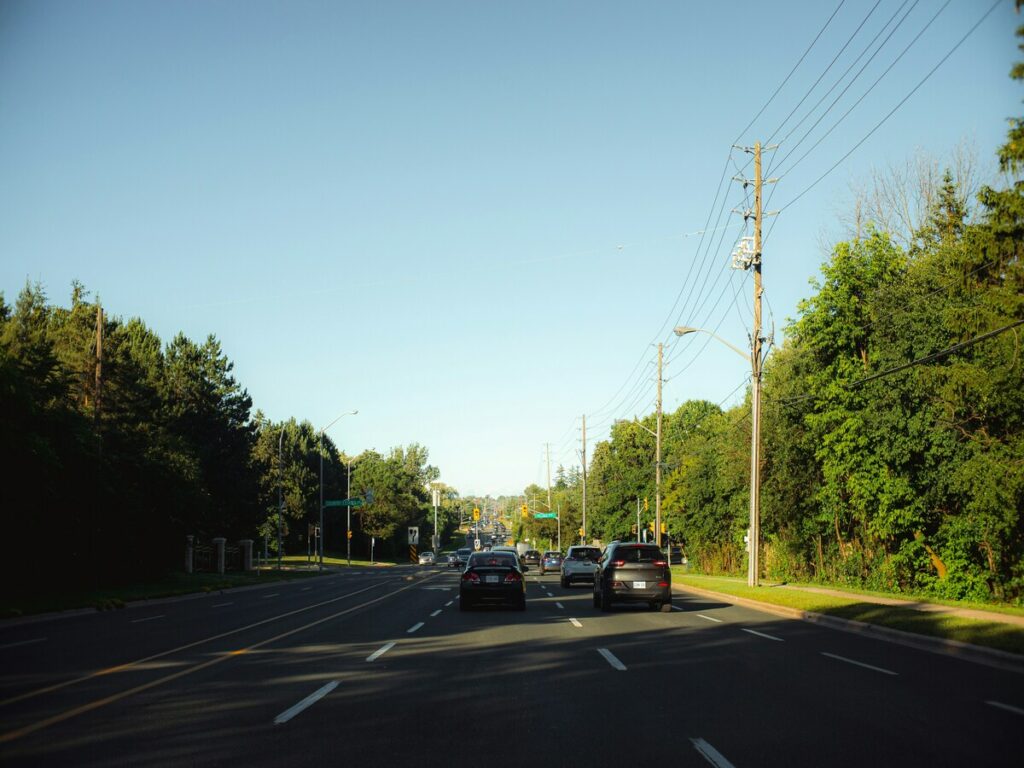
मानक अवलोकन
आईएसओ 14064 ग्रीनहाउस गैस उत्सर्जन को मापने के लिए एक वैश्विक नियम है. शहर और कंपनियां इसका उपयोग रोड बोलार्ड जैसी चीजों के कार्बन पदचिह्न की जांच करने के लिए करती हैं. नियम तीन मुख्य प्रकार के उत्सर्जन को देखता है. दायरा 1 उन चीजों से है जो एक कंपनी का मालिक है. दायरा 2 वे जो ऊर्जा खरीदते हैं, उससे है, और गुंजाइश 3 आपूर्ति श्रृंखला के अन्य भागों से है.
- आईएसओ 14064 शहरों को स्कोप गिनने में मदद करता है 3 रोड बोलार्ड जैसे उत्पादों के लिए उत्सर्जन.
- WBCSD जैसे समूह, डब्ल्यूआरआई, इलिसी, और C40 आईएसओ का उपयोग करके समर्थन करता है 14064 शहर की परियोजनाओं के लिए.
- अध्ययन गुंजाइश कहते हैं 3 उत्सर्जन गुंजाइश के रूप में बड़ा हो सकता है 1 और 2 एक साथ.
- नियम कहता है कि शहर की लाइनों के बाहर उत्सर्जन की गिनती के लिए खपत-आधारित लेखांकन का उपयोग करें.
- यह महत्वपूर्ण है कि दोनों गुंजाइशों में समान उत्सर्जन की गणना न करें 1 और गुंजाइश 3.
- नीति निर्माता आईएसओ का उपयोग करते हैं 14064 शहरों में उत्सर्जन में कटौती करने के लिए बेहतर योजना बनाने के लिए.
गणना विधियाँ
आईएसओ 14064 परियोजनाओं के कार्बन पदचिह्न खोजने के लिए कदम देता है. यह समूहों को सीमाओं को निर्धारित करने के लिए कहता है, उत्सर्जन स्रोत खोजें, और उत्सर्जन को मापने के लिए समान तरीकों का उपयोग करें. उन्हें डेटा एकत्र करना होगा, उत्सर्जन कारकों का उपयोग करें, और परिणाम स्पष्ट रूप से साझा करें.
| आईएसओ 14064 भाग | मुख्य गणना विधियाँ और आवश्यकताएँ | बुनियादी ढांचा परियोजनाओं के लिए प्रासंगिक उदाहरण |
|---|---|---|
| आईएसओ 14064-1 (संगठनात्मक स्तर) | – सभी जीएचजी स्रोतों की एक सूची बनाएं (दायरा 1, 2, और 3). – हर बार मापने के लिए उसी तरह का उपयोग करें. – डेटा को स्पष्ट रूप से साझा करें ताकि अन्य लोग इसकी जांच कर सकें. | – कंपनी के वाहनों से उत्सर्जन को ट्रैक करें (दायरा 1). – स्थानीय संख्याओं के साथ बिजली उत्सर्जन का पता लगाएं (दायरा 2). – उन चीजों के लिए आपूर्तिकर्ता उत्सर्जन की रिपोर्ट करें जो वे खरीदते हैं (दायरा 3). |
| आईएसओ 14064-2 (परियोजना स्तर) | – प्रोजेक्ट लिमिट्स सेट करें और क्या शामिल करें. – यह देखने के लिए उत्सर्जन शुरू करें कि क्या वे नीचे जाते हैं. – समय के साथ उत्सर्जन देखें. – बताएं कि आप कैसे मापते हैं और आप क्या अनुमान लगाते हैं. | – सौर पैनलों से कम उत्सर्जन को मापें. – पेड़ों को लगाकर बचाए गए कार्बन की गिनती करें. |
| आईएसओ 14064-3 (सत्यापन & मान्यकरण) | – डेटा की जांच करने की योजना बनाएं और क्या देखें. – सुनिश्चित करें कि GHG डेटा सही है. – जाँच करें कि उत्सर्जन कैसे मापा जाता है. – एक बयान दें जो कहता है कि डेटा सही है. | – बाहर के समूह GHG रिपोर्ट की जाँच करें. – क्रेडिट देने से पहले कार्बन ऑफसेट दावों की जाँच करें. |
रोड बोलार्ड के कार्बन पदचिह्न को खोजने के लिए, समूह ये कदम करते हैं:
- सभी आवश्यक कार्य को शामिल करने के लिए परियोजना क्षेत्र सेट करें.
- खोजें कि उत्सर्जन कहां से आता है:
- दायरा 1: बोलार्ड बनाने या स्थापित करने के लिए उपयोग किए जाने वाले ईंधन से प्रत्यक्ष उत्सर्जन.
- दायरा 2: बोलार्ड बनाने में उपयोग किए जाने वाले बिजली से अप्रत्यक्ष उत्सर्जन.
- दायरा 3: सामग्री से अप्रत्यक्ष उत्सर्जन, उन्हें हिलाना, और उन्हें फेंक दिया.
- ईंधन के बारे में डेटा इकट्ठा करें, बिजली, और सामग्री.
- डेटा को CO2 नंबरों में बदलने के लिए उत्सर्जन कारकों का उपयोग करें.
- सभी उत्सर्जन को जोड़ने के लिए सॉफ्टवेयर का उपयोग करें.
- रिपोर्ट का दायरा 1 और 2 उत्सर्जन, और स्कोप जोड़ें 3 पूर्ण दृश्य के लिए.
बख्शीश: आईएसओ का उपयोग करना 14064 कार्बन पदचिह्न परिणाम भरोसेमंद और तुलना करने में आसान बनाता है.
उत्सर्जन में कमी
उत्सर्जन को कम करने के लिए, आपको यह जानना होगा कि वे कहां से शुरू करते हैं. आईएसओ 14064 समूहों को उनकी परियोजनाओं में उत्सर्जन के सबसे बड़े स्रोतों को खोजने में मदद करता है. रोड बोलार्ड के लिए, अधिकांश उत्सर्जन सामग्री बनाने से आते हैं, उन्हें हिलाना, और उन्हें जगह में डाल दिया.
उत्सर्जन में कटौती करने के कुछ अच्छे तरीके हैं:
- बोलार्ड बनाने के लिए पुनर्नवीनीकरण या कम-कार्बन सामग्री चुनें.
- चलते समय कम ईंधन का उपयोग करने के लिए बेहतर मार्गों की योजना बनाएं.
- कारखानों में अक्षय ऊर्जा का उपयोग करें.
- बोलार्ड को लंबे समय तक और रीसायकल करने में आसान बनाएं.
- उन्हें लंबे समय तक काम करने के लिए बॉलार्ड्स की जाँच करें और ठीक करें.
आईएसओ का उपयोग करने वाले शहर और कंपनियां 14064 उत्सर्जन में कटौती करने के लिए स्पष्ट लक्ष्य निर्धारित कर सकते हैं. वे अपनी प्रगति देख सकते हैं और दिखा सकते हैं कि वे पर्यावरण की परवाह करते हैं. यह ग्रीन बिल्डिंग अवार्ड्स और जलवायु लक्ष्यों को पूरा करने में मदद करता है.
LEED V4.1 सामग्री प्रमाणन
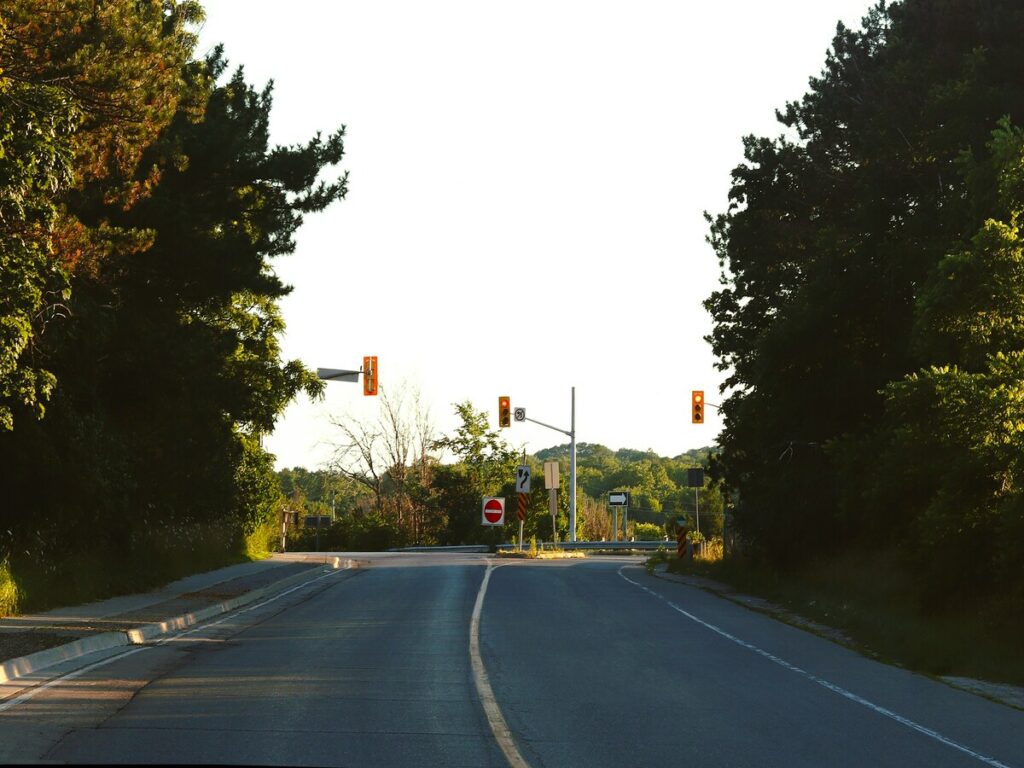
LEED आवश्यकताएँ
भवन निर्माण सामग्री का चयन करने के नियमों को स्पष्ट रूप से LEED V4.1 में परिभाषित किया गया है. सिस्टम चाहता है कि टीमें ऐसे उत्पादों का उपयोग करें जो पर्यावरण के लिए बेहतर हों. LEED V4.1 का एक बड़ा हिस्सा उपयोग कर रहा है पर्यावरणीय उत्पाद घोषणाएँ (ईपीडीएस). ईपीडी प्रकृति पर किसी उत्पाद के प्रभाव के बारे में तथ्य देते हैं, जैसे यह कितनी ऊर्जा का उपयोग करता है और अपने जीवन के दौरान कितना कार्बन बनाता है.
टीमों को उन सामग्रियों को चुनना चाहिए जो सुरक्षित हों, स्वस्थ, और ग्रह के लिए अच्छा है. LEED V4.1 एक उत्पाद के पूरे जीवन की जांच करता है, शुरू से आखिर तक. यह टीमों को उन चीजों को चुनने में मदद करता है जो कम उपयोग करते हैं और कम अपशिष्ट बनाते हैं. EPDs टीमों को उत्पादों की तुलना करने में मदद करते हैं और हरी इमारतों के लिए सबसे अच्छे लोगों को चुनते हैं.
टिप्पणी: EPDs मदद टीमों से पता चलता है कि उनके सामग्री विकल्प ग्रह के लिए अच्छे हैं और LEED नियमों को पूरा करते हैं.
सामग्री चयन
उठाना सही बोलार्ड सामग्री LEED प्रमाणन प्राप्त करने के लिए महत्वपूर्ण है. टीमें ईपीडी के साथ उत्पादों की तलाश करती हैं और पुनर्नवीनीकरण या नवीकरणीय सामान से बनी हैं. उदाहरण के लिए, पुनर्नवीनीकरण स्टील या कंक्रीट से बने रोड बोलार्ड का उपयोग करने से परियोजना के कार्बन पदचिह्न कम हो सकते हैं. टीमें यह भी जांचती हैं कि क्या चीजों का पुन: उपयोग किया जा सकता है या पुनर्नवीनीकरण किया जा सकता है जब वे बूढ़े होते हैं.
LEED V4.1 उन सामग्रियों का उपयोग करने के लिए पुरस्कार देता है जो लंबे समय तक चलती हैं और बहुत अधिक प्रदूषित नहीं करते हैं. इसका मतलब है कि सामग्री मजबूत रहती है और कम फिक्सिंग की आवश्यकता होती है. सुरक्षित और कठिन सामग्री का चयन करके, टीमें लोगों और पृथ्वी की मदद करती हैं.
LEED- प्रमाणित सामग्री का उपयोग करने के बारे में कुछ अच्छी बातें हैं:
- बेहतर ऊर्जा उपयोग के कारण कम बिल और लागत.
- अंदर क्लीनर हवा, जो लोगों को स्वस्थ रहने में मदद करता है.
- उच्च भवन मूल्य और प्रमाणित स्थानों के लिए किराया.
- पानी के लिए मजबूत नियम, ऊर्जा, और योजना बनाने वाली योजना.
- समूह ग्रीनहाउस गैसों को काटने के लिए बड़े लक्ष्यों को निर्धारित और पहुंच सकते हैं.
LEED अंक
LEED V4.1 उन सामग्रियों का उपयोग करने के लिए अंक देता है जो इसके नियमों का पालन करते हैं. एक ईपीडी के साथ प्रत्येक सामग्री एक परियोजना को क्रेडिट प्राप्त करने में मदद कर सकती है. अधिक हरी सामग्री एक टीम का उपयोग करती है, अधिक अंक उन्हें मिलता है. ईपीडी और पुनर्नवीनीकरण भागों के साथ रोड बॉलार्ड्स इन बिंदुओं को अर्जित करने में मदद कर सकते हैं.
नीचे दी गई तालिका से पता चलता है कि लीड इमारतें नियमित लोगों की तुलना में कैसे बेहतर करती हैं:
| पर्यावरण मीट्रिक | LEED- प्रमाणित इमारतों में कमी देखी गई |
|---|---|
| CO2 उत्सर्जन | 34% पारंपरिक वाणिज्यिक भवनों की तुलना में कम |
| ऊर्जा की खपत | 25% पारंपरिक वाणिज्यिक भवनों से कम |
| पानी का उपयोग | 11% पारंपरिक वाणिज्यिक भवनों से कम |
अधिक LEED बिंदुओं वाली परियोजनाएं वास्तविक परिवर्तन दिखाती हैं. वे कम ऊर्जा और पानी का उपयोग करते हैं, और वे कम कार्बन बनाते हैं. ये बदलाव शहरों और कंपनियों को अपने हरे लक्ष्यों तक पहुंचने में मदद करते हैं. LEED V4.1 नियमों से मिलने वाले रोड बॉलार्ड्स शहरों को सुरक्षित बनाने में मदद करते हैं, ग्रीनर, और सभी के लिए बेहतर है.
अनुपालन लाभ
दीर्घकालिक प्रभाव
जीवनचक्र अनुपालन लोगों और प्रकृति के लिए लंबे समय तक चलने वाले अच्छे प्रभाव देता है. जब शहर और कंपनियां आईएसओ का उपयोग करती हैं 14064 और LEED V4.1, वे कम अपशिष्ट बनाते हैं और समय के साथ कम ऊर्जा का उपयोग करते हैं. अच्छा जीवनचक्र प्रबंधन का मतलब है कि चीजें उतनी नहीं टूटती हैं. इसका मतलब है कि कम नई सामग्रियों की आवश्यकता होती है और कम कचरा लैंडफिल में जाता है. लोगों को सुरक्षित सड़कों और क्लीनर हवा मिलती है. कई वर्षों से अधिक, ये कार्य शहरों को जलवायु लक्ष्यों तक पहुंचने और सभी के लिए जीवन को बेहतर बनाने में मदद करते हैं.
निम्नलिखित नियम अच्छी तरह से जोखिम कम रखते हैं. एजेंसियों को कम मुकदमे मिलते हैं क्योंकि सुरक्षित डिजाइनों का मतलब कम दुर्घटनाएं हैं. लोग मजबूत बाधाओं के साथ सार्वजनिक स्थानों पर सुरक्षित महसूस करते हैं.
व्यावसायिक मूल्य
जीवनचक्र अनुपालन का उपयोग करना स्पष्ट तरीकों से व्यवसायों में मदद करता है. पर्यावरण के लिए बने रोड बोलार्ड के साथ परियोजनाओं में अक्सर कम दुर्घटनाएं होती हैं और कम पैसा खर्च होता है. नीचे दी गई तालिका से पता चलता है कि इन कार्यों से अलग -अलग स्थानों को बेहतर परिणाम कैसे मिलते हैं:
| स्थान/अध्ययन | सुधार प्रकार | परिमाणित परिणाम | आर्थिक बचत |
|---|---|---|---|
| सरे काउंटी, यूके | घातक और चोट दुर्घटना में कमी | 1.25 ऑडिट किए गए साइटों पर कम क्रैश/वर्ष | एन/ए |
| न्यू यॉर्क डॉट | दुर्घटना में कमी | 20% को 40% कम दुर्घटना | एन/ए |
| दक्षिण कैरोलिना डॉट साइट 1 | दुर्घटना में कमी | 12.5% कम कुल दुर्घटनाएँ | $40,000 |
| दक्षिण कैरोलिना डॉट साइट 3 | घातक कमी | 60% कम घातक | $3.66 दस लाख |
| दक्षिण कैरोलिना डॉट साइट 4 | दुर्घटना में कमी | 23.4% कम दुर्घटना | $147,000 |
इन नंबरों से पता चलता है कि सुरक्षित और नियम-निम्नलिखित डिजाइन पैसे बचाते हैं. वे दुर्घटनाओं को रोककर ऐसा करते हैं, मरम्मत, और कानूनी समस्याएं. एजेंसियों को भी उतना पुनर्निर्माण नहीं करना पड़ता है और समय के साथ चीजों को ठीक करने पर कम खर्च होता है.
वास्तविक दुनिया के उदाहरण
कई शहरों ने स्मार्ट और अर्थ-फ्रेंडली रोड बोलार्ड का उपयोग करके सड़कों को सुरक्षित और हरियाली बना दिया है. कुछ अच्छे उदाहरण हैं:
- न्यूयॉर्क शहर स्टील के बोलार्ड का उपयोग करता है जो व्यस्त उद्यानों में ऊपर और नीचे जा सकता है. ये कारों को बाहर रखते हैं और क्षेत्र को अच्छा बनाते हैं.
- लंदन शहर के खेतों में रोशनी के साथ लकड़ी के बोलार्ड डालता है. यह स्थानों को सुरक्षित और रात में देखने में आसान बनाता है.
- मेलबोर्न पुनर्नवीनीकरण प्लास्टिक से बने बोलार्ड को चुनता है. कुछ के पास पर्यावरण की मदद करने और लोगों को सुरक्षित रखने के लिए प्लांटर्स हैं.
- शिकागो सुंदर उपयोग करता है, उद्यान के आसपास हटाने योग्य बोलार्ड. यह लोगों को सुरक्षित रखता है लेकिन उन्हें आसानी से अंदर और बाहर निकलने देता है.
IoT और सोलर पावर के साथ स्मार्ट बोलार्ड्स शहरों को ट्रैफ़िक और सुरक्षा को नियंत्रित करने में मदद करते हैं. इन परियोजनाओं से पता चलता है कि नियमों का पालन करना शहरों को सुरक्षित बनाता है, ग्रीनर, और सभी के लिए अच्छे.
एकीकरण रणनीतियाँ
संरेखित मानकों को संरेखित करना
समूह आईएसओ प्राप्त कर सकते हैं 14064 और LEED V4.1 अपने सिस्टम को ग्रीन बिल्डिंग लक्ष्यों से मिलान करके. आईएसओ 14064 ग्रीनहाउस गैस संख्याओं की गिनती और साझा करने के बारे में है. LEED V4.1 उन सामग्रियों का उपयोग करने के लिए पुरस्कार देता है जो प्रकृति के लिए बेहतर हैं. टीमें डेटा को इकट्ठा करने और साझा करने के लिए उसी तरह से इन नियमों को जोड़ सकती हैं.
इन मानकों को जोड़ने की एक अच्छी योजना में ये चरण हैं:
- आईएसओ का उपयोग करें 14001 एक पर्यावरण प्रबंधन प्रणाली बनाने के लिए. यह प्रणाली टीमों की योजना में मदद करती है, करना, जाँच करना, और हरे लक्ष्यों को ठीक करें.
- आईएसओ का उपयोग करें 14064-1 ग्रीनहाउस गैस उत्सर्जन को गिनने और नियंत्रित करने के लिए. यह टीमों को शुरू से अंत तक उत्सर्जन को ट्रैक करने में मदद करता है.
- आईएसओ का पालन करें 14040 सड़क के पूरे जीवन को देखने के लिए. यह टीमों को यह देखने देता है कि प्रत्येक कदम पृथ्वी को कैसे प्रभावित करता है.
- आईएसओ के साथ ऊर्जा का उपयोग देखें 50001. यह नियम टीमों को कम ऊर्जा का उपयोग करने में मदद करता है.
- LEED के बिल्डिंग नियमों के साथ ISO सिस्टम मिलाएं. इससे नियमों के दोनों सेटों का पालन करना आसान हो जाता है.
- याद करना, आईएसओ को नियमित जांच की आवश्यकता है, लेकिन लीड देखता है कि इमारतें समय के साथ कैसे करती रहती हैं.
इन नियमों का मिलान करके, टीमें दोनों प्रमाणपत्रों के लिए एक सरल रास्ता बना सकती हैं. यह टीमों को बेहतर योजना बनाने और मजबूत परिणाम प्राप्त करने में मदद करता है.
प्रलेखन
प्रमाणित होने के लिए स्पष्ट रिकॉर्ड बहुत महत्वपूर्ण हैं. टीमों को इस बात का प्रमाण रखना चाहिए कि वे आईएसओ और लीड दोनों नियमों का पालन करते हैं. अच्छा रिकॉर्ड रखने का मतलब है:
- कर्मचारियों के नियमों और प्रशिक्षण रिकॉर्ड को चालू रखना.
- काम के लिए मानक चरणों का लेखन और उपयोग करना.
- चेक-अप रिकॉर्ड सहेजना और हरी नंबरों को ट्रैक करना.
- बेहतर होने के लिए प्लान-डू-चेक-एक्ट चक्र का उपयोग करना.
- ग्रीनहाउस गैस संख्या को खुला और जांचने में आसान बनाना.
- बाहर के विशेषज्ञ होने से जांच करें कि क्या ट्रस्ट बनाने के लिए नियमों का पालन किया जाता है.
- योजना में मदद करने के लिए लिखित प्रणालियों का उपयोग करना, घड़ी, और सुधार.
- आईएसओ का उपयोग करना 14031 ट्रैकिंग प्रगति और आईएसओ के लिए 14063 ग्रीन न्यूज साझा करने के लिए.
जीवनचक्र अनुपालन पर्यावरण के लिए रोड बोलार्ड को बेहतर बनाता है. टीमें हरियाली के विकल्प चुनने के लिए कार्बन फुटप्रिंट चेक और LEED प्रमाणन का उपयोग करती हैं. ये क्रियाएं सड़कों को सुरक्षित बनाने और शहरों को स्वस्थ बनाने में मदद करती हैं.
जब निर्माता और परियोजना टीमें इन चरणों का उपयोग करती हैं, लोग उन पर अधिक भरोसा करते हैं. वे दिखाते हैं कि वे स्थिरता की परवाह करते हैं और उदाहरण के लिए नेतृत्व करते हैं. वे नए नियमों के लिए भी तैयार हो जाते हैं और क्या खरीदार चाहते हैं. जीवनचक्र अनुपालन चुनना अब लोगों और भविष्य में पृथ्वी के लिए अच्छे परिणाम लाता है. 🌱
अक्सर पूछे जाने वाले प्रश्न
शहरी क्षेत्रों में रोड बोलार्ड का मुख्य उद्देश्य क्या है?
रोड बोलार्ड लोगों और इमारतों को सुरक्षित रखते हैं. वे नियंत्रण में मदद करते हैं जहां कारें जा सकती हैं. वे इसे चलने वाले लोगों के लिए भी सुरक्षित बनाते हैं. शहरों ने उन्हें सड़कों और पार्कों को सुरक्षित बनाने के लिए रखा.
ISO कैसे करता है 14064 स्थिरता के साथ मदद करें?
आईएसओ 14064 ग्रीनहाउस गैस उत्सर्जन को मापने के लिए कदम देता है. यह कंपनियों को यह देखने में मदद करता है कि वे प्रदूषण में कहां कटौती कर सकते हैं. इससे जलवायु लक्ष्यों तक पहुंचना आसान हो जाता है.
पर्यावरण उत्पाद घोषणा क्यों करते हैं (ईपीडीएस) LEED v4.1 के लिए मामला?
EPDs हमें बताते हैं कि कोई उत्पाद पर्यावरण को कैसे प्रभावित करता है. LEED V4.1 कम प्रभाव वाली सामग्री को चुनने के लिए अंक देता है. यह टीमों को उनकी परियोजनाओं के लिए अधिक अंक प्राप्त करने में मदद करता है.
बोलार्ड में पुनर्नवीनीकरण सामग्री लीड पॉइंट अर्जित करने में मदद कर सकती है?
हाँ. बोलार्ड में पुनर्नवीनीकरण या अक्षय सामग्री का उपयोग करने से LEED V4.1 क्रेडिट प्राप्त करने में मदद मिलती है. ये विकल्प पृथ्वी के लिए बेहतर हैं और परियोजनाओं को प्रमाणित करने में मदद करते हैं.
क्या रिकॉर्ड टीमों को प्रमाणन के लिए रखना चाहिए?
टीमों को ईपीडी को बचाना चाहिए, कार्बन रिपोर्ट, प्रशिक्षण सूची, और मरम्मत रिकॉर्ड. अच्छे रिकॉर्ड रखने से पता चलता है कि वे नियमों का पालन करते हैं और चेक को आसान बनाते हैं.




